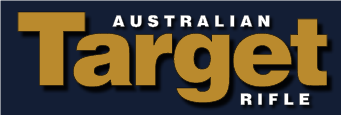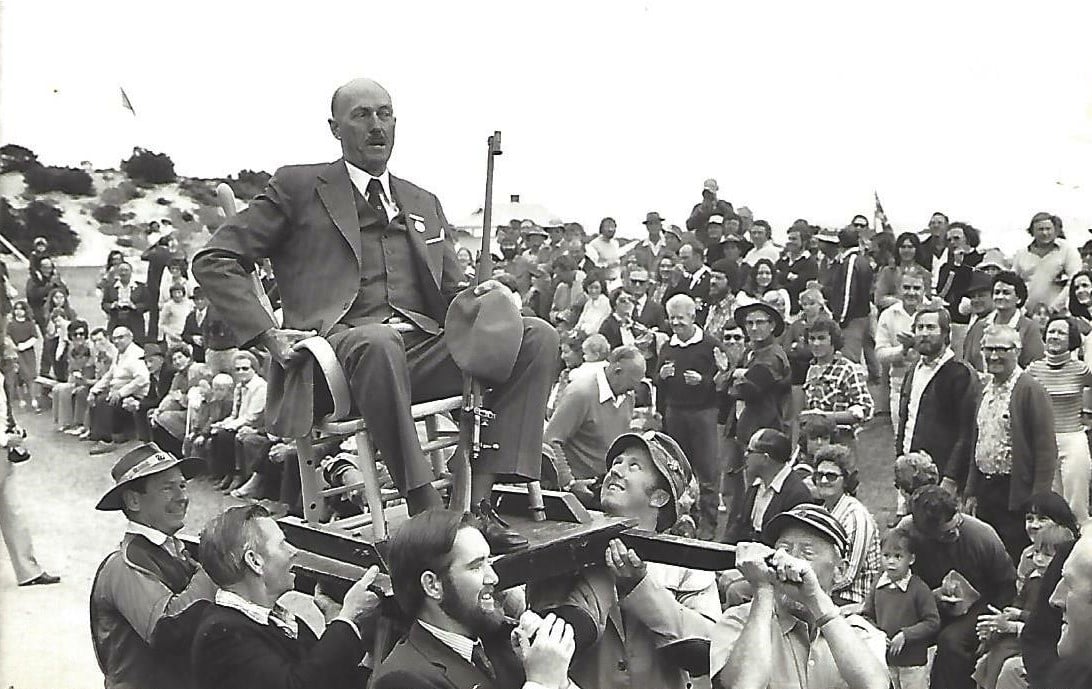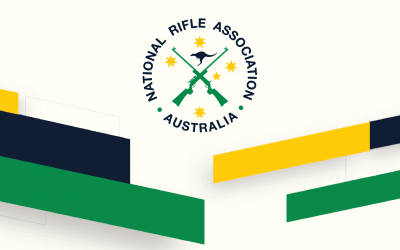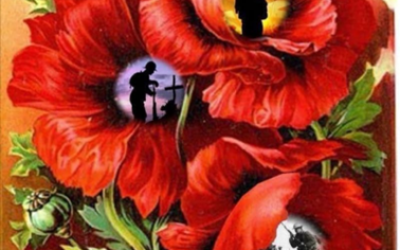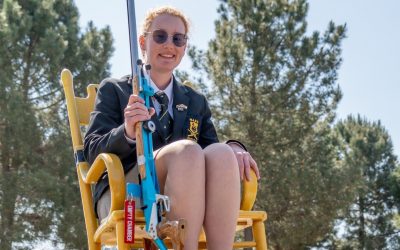This article will examine Australian Fullbore and Military Rifle shooting competitions that incorporate the
chairing of the champions.
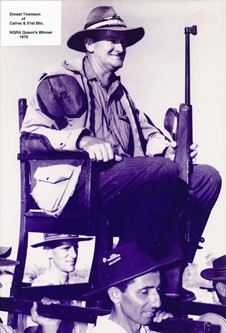

FULLBORE SHOOTING
For as long as rifle shooters can remember, the Fullbore target rifle competitor who is victorious at either an Australian State or National King’s or Queen’s Prize designated shooting championship has been chaired at some point from firing the last shot to being presented as the winner at the awards ceremony. The Chairing Ceremony, whereby fellow competitors hoist the winner upon their shoulders in a ‘special’ chair, is acknowledgement of the shooting champion who emerged from the field of competitors.
The Commonwealth Games Fullbore shooting event is based upon the United Kingdom King’s/Queen’s championship course of fire. Recognised as a King’s / Queen’s Prize, the Chairing Ceremony occurs at the Commonwealth Games when the Fullbore individual champion and gold medalist is confirmed.
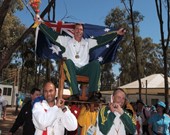
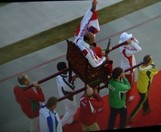
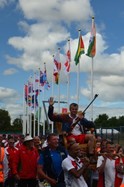
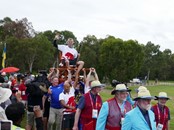
With the introduction of the Individual Long Range World Championship (LRWC) event in 1992, the Chairing Ceremony has often been adopted by the host country to acknowledge the newly crowned World Champion. The LRWC occurs once every four years.
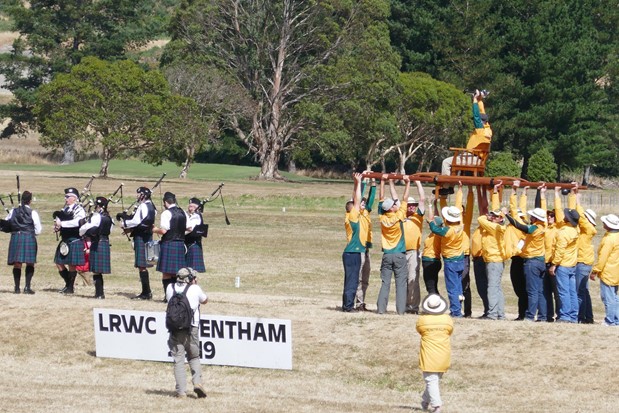
So where did this tradition arise from?
As with many of Australia’s traditions there is likely a link back to similar traditions developed and exercised in England.
While specific historical records on the chairing of the winner are scarce, there is much information on the use of a chair of various sorts as a form of transport ranging from the sedan chair to Roman and other litters that were used to carry people. The Pope is carried in a chair in some ceremonies, but that is a religious practice and not a sporting one.
The First ‘Recorded’ Chairing Ceremony for Shooting
The earliest evidence of the Chairing Ceremony for the sport of long range rifle shooting is recorded in the book titled ‘History of the National Rifle Association during its first fifty years 1859 to 1909’ by A.P. Humphry and Lieutenant Colonel the Hon T.F. Fremantle, 1914. Humphry & Fremantle p.280 states that:
‘The winner this year [1883], Sgt Mackay, was the first to escape being carried from the firing- point in a spread-eagled attitude of doubtful dignity, as he had the advantage of occupying the carrying chair given to the Association by Mr Charles Wainwright, formerly of the London Rifle Brigade’.
The plate on the original chair reads: ‘Presented in 1883 by Sgt GJ Wainwright LRB’. This suggests that the Chairing Ceremony was introduced at the Wimbledon Championship in 1883 and is peculiar to shooting and the King’s/Queen’s Prize.
Since this likely first chairing of the winner, the ceremony has been adopted by many other nations, particularly Commonwealth Countries, where long range rifle shooting is an established and recognised activity.
The First ‘Recorded’ Chairing Ceremony in Australia
While evidence is difficult to locate, the book titled ‘The History of the National Rifle Association of New South Wales 1860 to 1956’ by C. Howard Cromack suggests that New South Wales adopted the Chairing Ceremony in 1907 at the then Randwick Rifle Range. Cromack p.43 states when referring to the 1907 King’s Prize:
“Our ‘King’s’ was won by W. Cutler and Bill was the first ‘King’s’ winner to be ‘chaired’. The procession started at the 1000 yds. range and finished at the School of Musketry nearby. Fred Harrison came second and Billy Lynn third.”
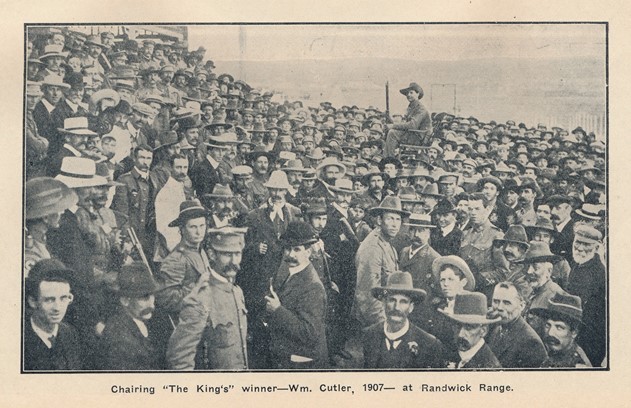
It appears that after the first Chairing Ceremony in Sydney, it may have been adopted quickly across Australia. The Townsville Daily Bulletin, 28 April 1908, page 7 reported on the return home, by train, to Irvinebank by the 1908 North Queensland Rifle Association (NQRA) King’s Prize winner, Herbert J. Armstrong, and his team mates:
‘The team were met at Hartley’s Siding by the Town Band, who were accommodated in a waggon [sic] behind the carriage, and enlivening airs were played right up to the station. As
the engine steamed round the last curve the Band struck up “See the Conquering Hero Comes,” amidst prolonged cheering from the large crowd assembled at the station. As soon as the train stopped Armstrong and other members of the team were rushed, and their hands nearly torn off. The members of the Rifle Club had prepared a chair for the King’s winner, and on this he was hoisted shoulder high and carried in triumph to the School of Arts Hall, the order of the procession being, Towns Band, the King’s Prize winner with bearers, the members of the club team, and a long stream of townspeople brought up the rear.’

The Monarch’s Prize
The first of the Queen’s Prize competitions was held at England’s Wimbleton Rifle Range in July 1860. Queen Victoria’s appearance at Wimbledon to fire the ceremonial first shot and her donation of £250 as the prize triggered the naming of the event as the Monarch’s Prize. Of note, the Monarch’s prize was originally restricted to competitors from Commonwealth Countries or the Dominions until 1994, when it became open to all.
The conduct of the Queen’s Prize events in Australia was largely managed by the various Colonial Volunteer Corps and later the State Defence Forces (pre-Federation) as the competition was viewed as a measure of shooting proficiency within the military of the day. The rifle clubs were deemed to be a necessary element of the national defence response and were controlled by either the Government of the specific Colony (State) or Federal Government (post-Federation) until 1960. From the mid to late 1800s through to the 1950s both ammunition and rifles were provided by the respective military organisations to rifle club members. The conduct of the various Queen’s and King’s Prizes was supported initially by the respective Colonial Defence Forces and later by the Department of the Army. This support included the provision of prize money for the competitions. It is therefore surmised that the introduction of the Chairing Ceremony also had the support of the military headquarters of the day.
AUSTRALIAN MILITARY KING’S / QUEEN’S MEDAL / CHAMPION SHOT
The military specific King’s Medal was first contested in Australia at the Williamstown Rifle Range in Victoria in May 1924. The military King’s / Queen’s Medal competition has been held every year since except for the period of the Second World War (1940-46).
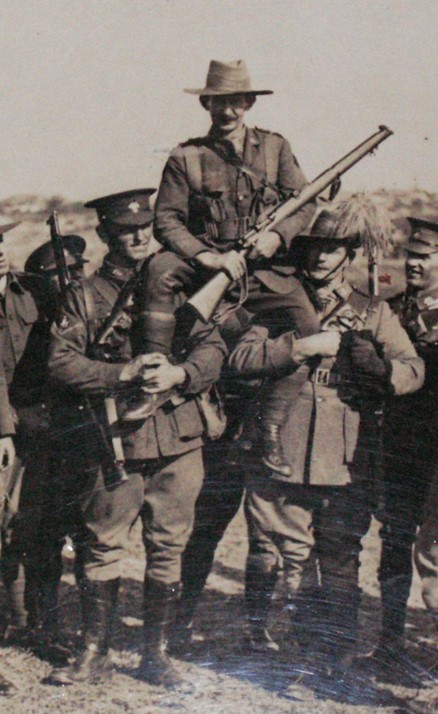
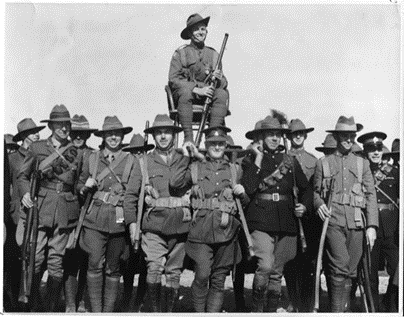
– Private Norman Wilfred Savage of Sydney University Regiment
This military specific competition continues today with the name changing to the Champion Shot with the winner receiving the Champion Shots Medal. The Champion Shots Medal is awarded to the winner in each of the three Services. The list of Army winners (1924 to 2020) can be found at http://www.queensmedal.net/ files/australian_army.htm
In his book ‘Shoot to Win – the first ten years, Australian Army Rifle Association’, Russell Linwood outlines the evolution of the Queen’s Medal through to the Champion Shots Medal. Importantly, his book contains several photographs which further demonstrate that the Chairing Ceremony is a tradition that has been carried over from fullbore shooting into military shooting competitions.
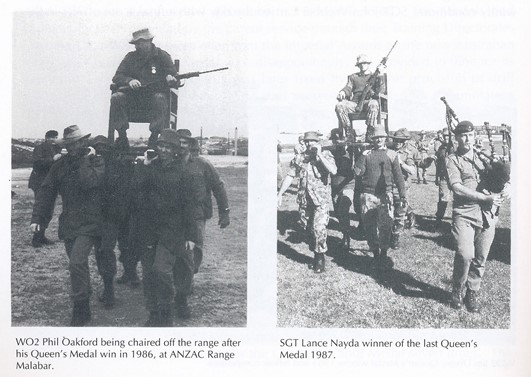

The photographs above indicate the Australian military champions are also accorded the honour of a Chairing Ceremony. The Melbourne newspaper, The Argus, on Monday 25 May 1925, reported that “C. E. Merrett, chairman of the Council of the Victorian Rifle Association, who was present, kindly placed the D. McCulley chair, which has carried many King’s prize winners, at the disposal of the authorities and Warrant- Officer Taylor was “chaired” in the appropriate manner.” It is likely that when Warrant Officer Davies won the King’s Medal in 1926, the State Rifle Association chair was not available.
CONCLUSION
The Chairing Ceremony appears unique to rifle shooting with it first occurring in England in 1883 for the winner of the Queen’s Prize. It has been adopted by most countries where the sport of long range rifle shooting, commonly referred to as fullbore shooting, is pursued. Today, the tradition of the Chairing Ceremony continues within all Australian States and Territories that are approved to host a Queen’s Prize. It is also continues for the annual military Champion Shot competitions.

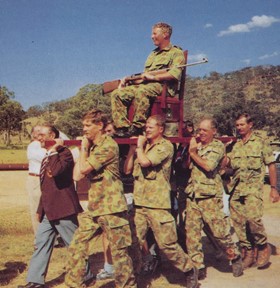
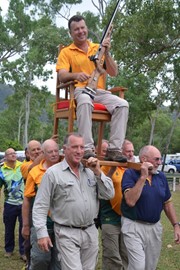
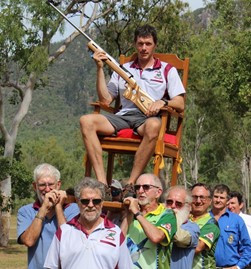

Information contained within this article has been gathered from:
- Emails between the author and Mr Tony de Launay, Curator, Museum of the NRA of GB.
- History of the National Rifle Association during its first fifty years 1859 to 1909 by A.P. Humphry and Lieutenant Colonel the Hon T.F. Fremantle, 1914.
- The History of the National Rifle Association of New South Wales 1860 to 1956 by C. Howard Cromack, 1956.
- The Riflemen – ‘A History of the National Rifle Association of Australia 1888-1988’ by Andrew J Kilsby (2013).
- Shooting Awards and Prize Medals to Australian Military Forces by John O’Connor, 2002.
- Shoot to Win – the first ten years, Australian Army Rifle Association by Russell Linwood, 1993.
- Australian winners of King’s/Queen’s Medals http://www.queensmedal.net/files/australian_army.htm
- Melbourne newspaper The Argus dated 25 May 1925.
- Townsville Daily Bulletin, page 7 dated 28 April 1908.
- Emails between the author and Mr Sam Kremer, Secretary of the Sydney High School Rifle Club.
- The NQRA 2016, 2018 and 2021 colour photographs are from the author’s collection.
Author: Bruce A R Scott, President, National Rifle Association of Australia, updated 17 August 2021
